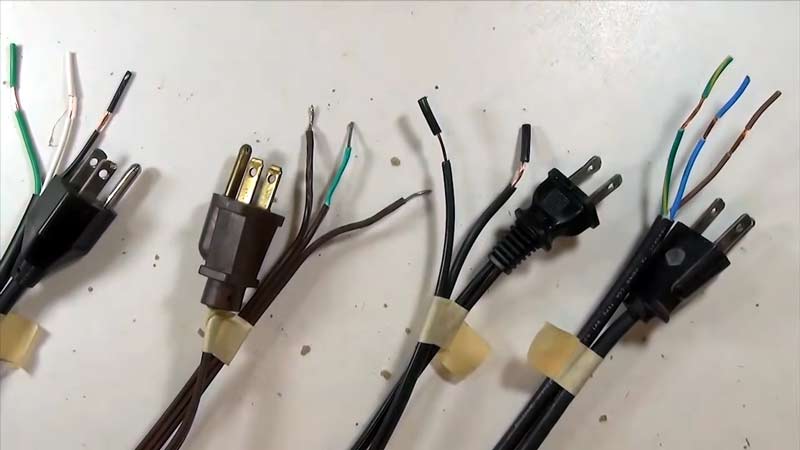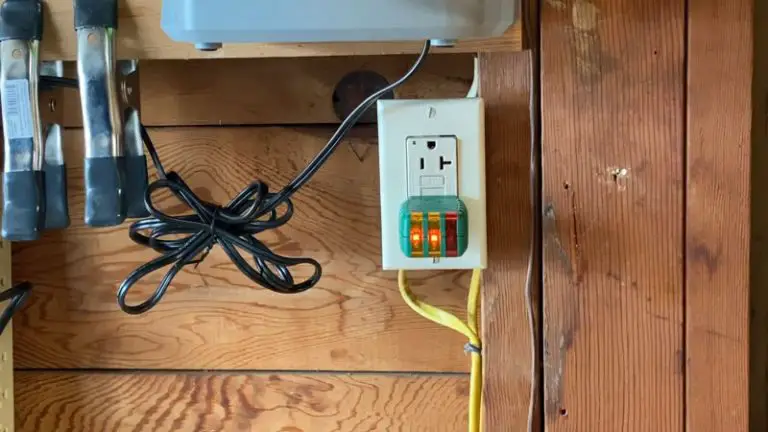Can I Connect the Green Wire to the White Wire?

Before connecting any wires in your house, determine the function of each wire. Wires come in different colors and have different purposes. You must connect them to the correct terminals for their functions to work correctly.
Several terminals are located throughout a house. Keep an eye out for them when wiring your home. Knowing which terminal goes where can make troubleshooting easier if something goes wrong.
You'll Learn About
Is it Okay to Connect the Green Wire to the White Wire?
No — do not connect the green (equipment grounding) conductor to the white (neutral) conductor in branch-circuit wiring. Neutral and ground are bonded together only at the service disconnect/main bonding point (or as allowed by local codes at the service), and connecting them together elsewhere can create shock and fire hazards and will likely violate electrical code.
Never attempt to identify conductors by guessing or by touching them together; use a proper voltage tester or continuity tester to identify hot, neutral, and ground, or hire a licensed electrician.
A Better Explanation
Green (or bare) conductors are equipment grounding conductors used for safety and fault clearing. White or gray conductors are neutrals used to carry current under normal operation (in AC systems). These two conductors are intentionally connected only at the main service bonding point so that only one deliberate connection exists between the neutral and earth. Making additional neutral-to-ground connections in branch circuits can create objectionable currents on grounding conductors and metal parts, resulting in safety hazards.
You Cannot Connect the Green to the White
Do not join green (ground) to white (neutral) in a device box or at an outlet; this is unsafe. If a neutral-to-earth bond is required for an old ungrounded receptacle, proper upgrade options include running an equipment grounding conductor, replacing the cable with grounded cable, installing a listed adapter with GFCI protection and labeling, or installing a listed Class II (double-insulated) fixture—each option must comply with local code.
The Cable and Color Conventions
Color conventions vary by country and system, but in many residential AC systems: green or bare = equipment ground; white or gray = neutral; black/red (and other colors) = hot (live). Battery systems and automotive wiring use different color conventions (for example, red often positive and black negative). Always confirm the system and local standards before connecting anything.
Only Connect Grounding Wires to Other Grounding Wires (Properly)
Grounding conductors are intended to be bonded together and to the building grounding system with listed clamps and methods. Grounding conductors from branch circuits usually join in the box to the grounding conductor that returns to the service and to any metal box or conduit that must be bonded. Use listed wire connectors and grounding screws; do not improvise with random fasteners.
The Solution
If you are unsure which wire is which, stop and identify conductors with a proper tester or multimeter. Label conductors as you identify them. If the wiring is ambiguous, old, or missing a grounding conductor, choose a code-compliant remediation: run a new grounded cable, install a properly listed device or adapter with GFCI protection and label it, or have a qualified electrician update the branch circuit.
Do not “experiment” by connecting wires until you know their function. Experimentation with live conductors is dangerous and can damage equipment or cause fire and injury.
- If your circuit has a properly installed equipment grounding conductor, connect fixture ground to that conductor using a listed connector or grounding screw.
- If your home lacks a ground conductor in a branch circuit, use an approved solution — running a new EGC, replacing the cable, using a Class II (double-insulated) fixture, or installing a GFCI-protected and labeled device — and follow local code.
- When in doubt, call a licensed electrician; do not proceed when conductor identity or condition is uncertain.
Green Wire — What It Connects To
The green or bare conductor is for equipment grounding. It should never be connected to a live (hot) conductor such as black or red. It is bonded to equipment enclosures and the grounding system to provide a low-impedance path for fault current so overcurrent protective devices can operate.
White Wire and Green Wire Shouldn’t Be Connected (Except at Main Bonding Point)
Neutrals and grounds are usually connected only at the service equipment/main bonding point (and at properly designed service-grounding electrode connections). In subpanels and branch circuits they must remain separate per most codes. Tying neutral to ground downstream can energize metal parts and create shock hazards.
Connecting Neutral To Ground
You must not connect neutral to ground at a device or branch-circuit location. Neutral-to-ground bonding is a service-level action. If a device’s chassis or outlet needs grounding and no EGC exists, use code-allowed alternatives or have a professional add the required grounding conductor.
For more details about permitted workarounds and code exceptions see the linked resource and consult your local authority having jurisdiction.
Additional Topics

Wire Color Conventions (Quick Reference)
- AC branch circuits (common in many regions): Black/Red — hot (live); White/Grey — neutral; Green/Bare or Green-Yellow — equipment ground.
- Automotive and DC systems: Colors differ (commonly red = positive, black = negative), so do not mix conventions between DC and AC systems.
- Always confirm local color standards; some regions use different color codes for wiring.
How to Identify Conductors Safely
- Turn off the circuit and verify de-energized with a non-contact tester or voltage tester.
- If power must remain on for testing, use a properly rated multimeter and follow safe testing procedures — or have an electrician perform live testing.
- Label conductors after identification to avoid future confusion.
Tools and Materials You May Need
- Voltage tester / non-contact tester
- Multimeter (for continuity and voltage checks)
- Listed wire strippers, wire nuts, grounding screws, and listed grounding clamps
- Appropriate replacement cable or wiring materials that comply with local code
When to Call an Electrician
- If you cannot positively identify conductors.
- If the branch circuit lacks a grounding conductor and you need a permanent, code-compliant fix.
- If wiring is old, damaged, or shows signs of overheating or corrosion.
- If you are unsure about local code requirements or permit/inspection needs.
Common Mistakes to Avoid
- Do not tie neutral and ground together anywhere except at the main bonding point (unless a local code exception and listed method apply).
- Do not use random screws, clamps, or unlisted hardware for grounding connections.
- Do not assume conductor function by color alone if the installation is old, modified, or nonstandard — test instead.
- You can use any wire as a ground wire, but remember which one is the ground wire.
To Recap
The white wire (neutral) should be connected to the neutral terminal; the green or bare wire (equipment ground) should be connected to the ground terminal or bonded to the grounded box or grounding conductor. Neutral and equipment ground are only bonded at the service/main bonding location — do not create additional neutral-ground bonds in branch circuits.
If you connect a neutral wire to the ground on your device, this will cause the chassis of your device to be at the “hot” voltage, which is very dangerous. Make sure any wires connected to the ground are properly insulated and double-checked for continuity before making this connection.
If you are not certain about identification, condition, or required code compliance, contact a licensed electrician. Mistakes in wiring can create hazardous conditions.
Frequently Asked Questions
Why do you tie the neutral and ground together?
Neutral and ground are bonded at the service disconnect/main panel to establish a reference to earth and to ensure overcurrent devices clear faults. They are not to be tied together at subpanels or branch circuits.
Can neutral and earth be connected together?
They are connected only at the main bonding point of the electrical service. Connecting them elsewhere is typically prohibited and unsafe. Always follow local code and consult an electrician for proper solutions.
For further reading and product-specific information, keep the existing links in the article and consult your local electrical code or a licensed electrician for guidance tailored to your location and installation.
Also Read – Snapper Pro S200xt problems and solutions and Echo SRM 2620 vs 2620T


